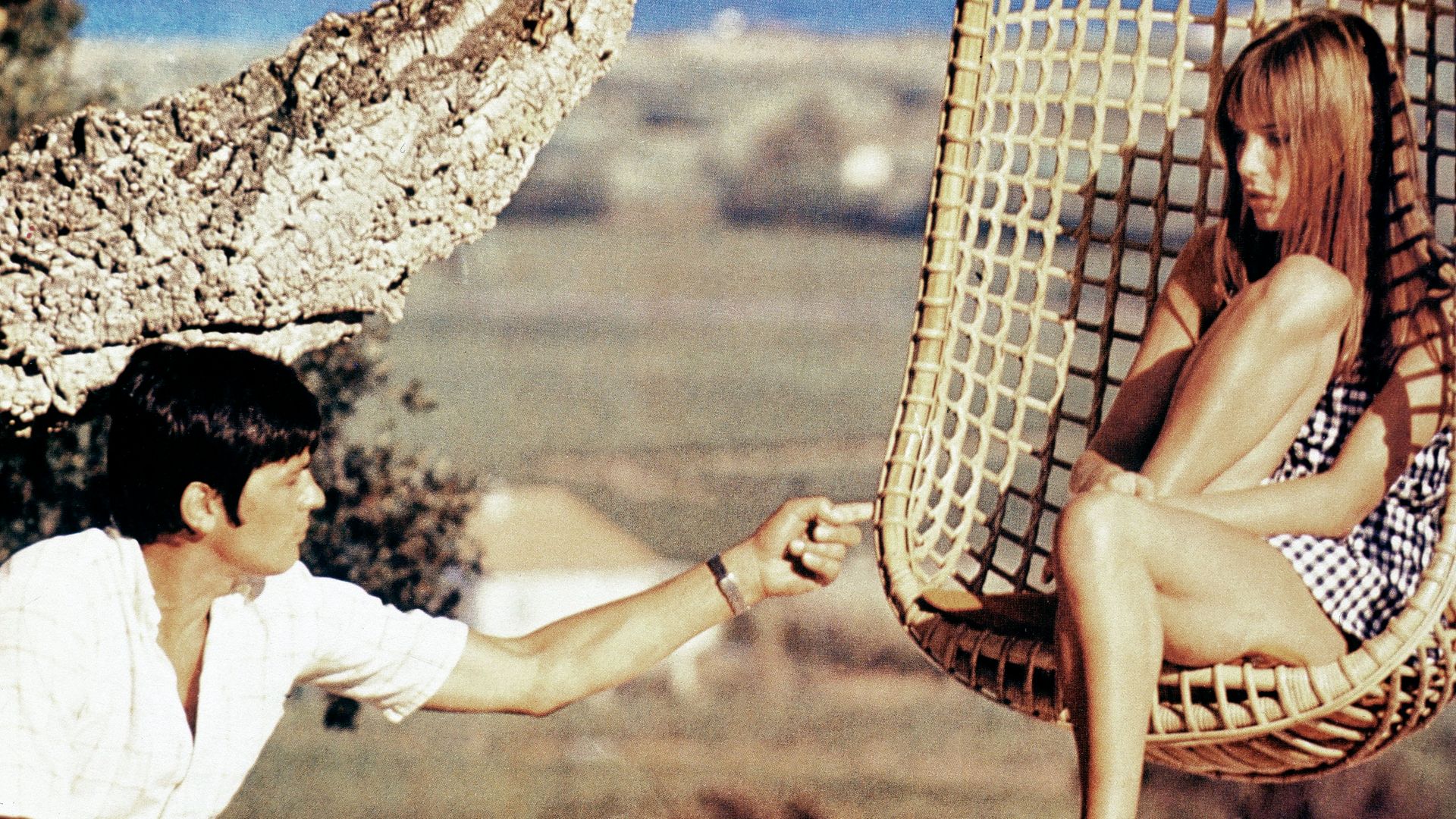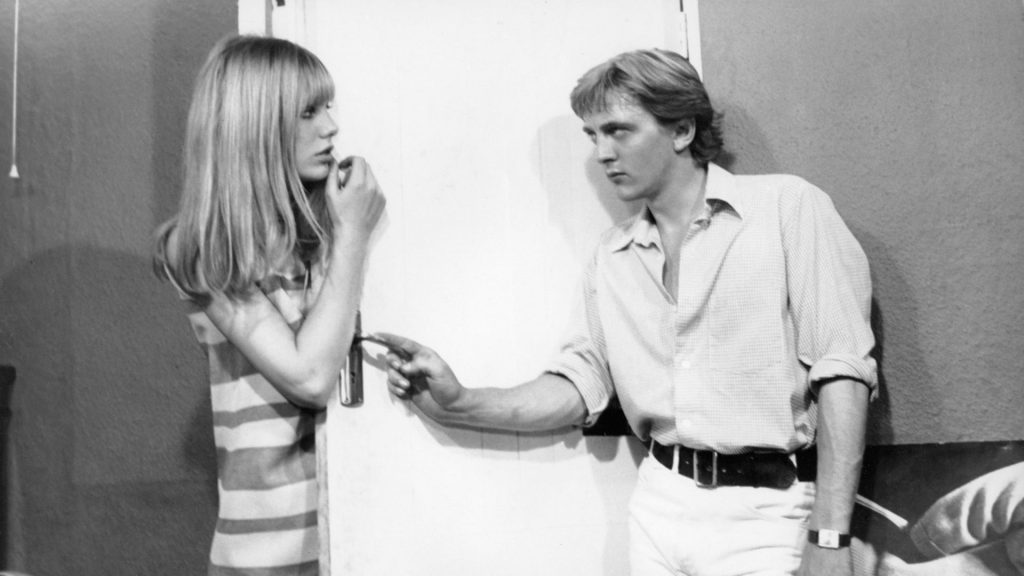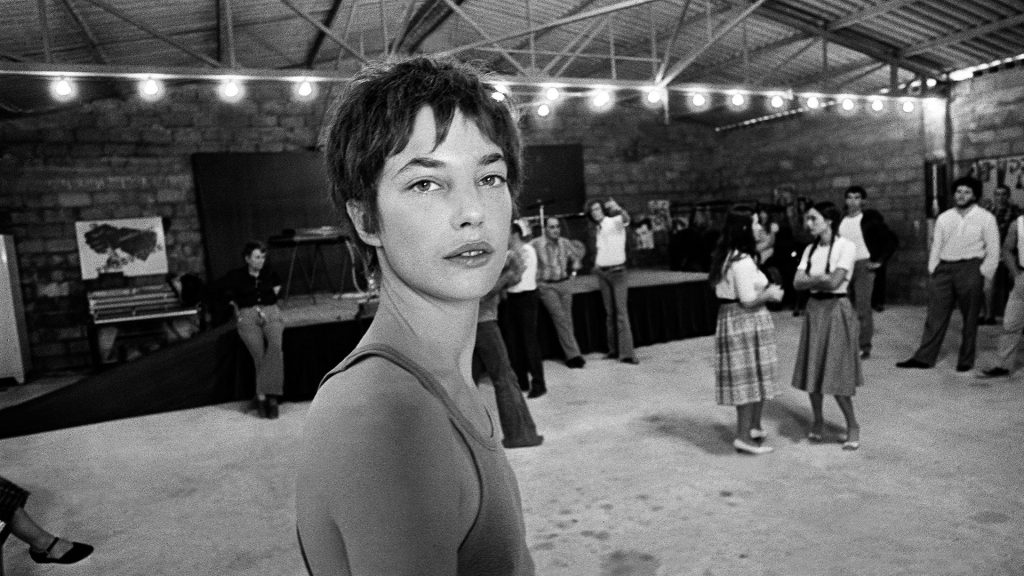
Overshadowed by her music, modelling and private life, Richard Luck says Jane Birkin’s career in film deserves a reappraisal – even if not all of her movies themselves do.
She has many stories to tell, Jane Birkin. Little wonder her recent book – Munkey Diaries, published for the first time in English this summer – concentrates solely on the years between 1957 and 1982.
Her time as a model, her life with Serge Gainsbourg and her experiences as his muse, her successful singing career, the scandal surrounding Je t’aime… moi non plus – all this and the birth of her three remarkable children; Birkin’s idea of munkey business is heady stuff indeed.
Then, on top of everything else, there’s her career in film. Yes, in addition to the those accomplishments, Jane Mallory Birkin’s racked up around 90 acting credits.
That she’s also written, directed and scored films simply enhances one’s admiration for the woman and her work ethic. Not that La Birkin has ever been in danger of taking herself too seriously. Even when she was being touted as the British rival to Brigitte Bardot, the actor was quick to stress the chaste reality of her existence. As she’d memorably remark, “At 18, I was the oldest virgin in Chelsea.”
From south west London to Europe’s allusive, illusory land of fame, Jane Birkin’s movie journey began with small parts in big pictures. Whatever the British New Wave might have been, and opinions vary, Richard Lester’s The Knack …and How to Get It (1965) and Michelangelo Antonioni’s Blowup (1966) were at its forefront and each featured the actress in minor roles.
Birkin’s early acting credits also included the part of ‘Exquisite Thing’ in the Warren Beatty picture Kaleidoscope (1966), plus supporting turns in a variety of Armchair Theatre productions.
Her status as a ’60s London face was further enhanced by marriage to composer John Barry. Riding high on the back of his work on the Bond series, The Ipcress File and Born Free, the future Oscar winner wed Birkin on October 16, 1966.
The union produced a daughter, Kate, and no-end of press talk about Britain’s golden couple. Alas, while Jane was at home with the baby, her husband continued to enjoy a bachelor’s existence.
As the composer would later explain in an interview with Mojo magazine, since he needed peace and quiet in which to work, he purchased a flat around the corner from his and Birkin’s Belgravia home. “That place,” he explained, “created… opportunities.”

By the time of the couple’s divorce in 1968, Birkin had added ‘cult figure’ to her CV. With a soundtrack courtesy of George Harrison, Wonderwall was the sort of brilliant-if-incomprehensible art movie that were rather more common than you’d expect in the late 1960s. A movie more discussed than seen, nevertheless Birkin, in the part of ‘Penny Lane’, was able to bathe in the light that kissed any project from the era that bore endorsement from a Beatle.
Shortly thereafter, association with another musician would come to colour every aspect of her private and creative life.
The 12-or-so years she spent with Serge Gainsbourg have been the subject of biographies and magazine articles, documentaries and biopics. As far as their life in and on film is concerned, it began subsequent to Jacques Deray casting Birkin in his romantic crime drama, La Piscine (1969).
Looking back at her first foray into French cinema, Birkin recalls the harshness of the critical response. As she’d explain during a BFI Q&A: “My early French performances were considered wildly comic by the press. They weren’t meant to be, of course, but since I didn’t really speak the language and my accent was all over the place, there was a bull’s eye on my back.”
Things improved after she starred opposite Gainsbourg in Pierre Grimblat’s Slogan (1969). Though the film was dismissed as a euro-pudding, the chemistry was extraordinary.
While proximity to Birkin granted Gainsbourg attractiveness, even beauty, her association with him led to her being taken more seriously.
At least, that was when she wasn’t busy being the sexiest Englishwoman in the history of film. Perhaps only Charlotte Rampling has been considered as erotic and exotic. That Birkin’s post-Slogan pictures included the shorts/music videos she made with Gainsbourg to promote their smash hit Je t’aime… moi non plus, as well as a Henry Chapier movie rejoicing in the title of Sex Power (1970) only served to sauce up her image.
To point out that many of the movies Birkin made in this era weren’t especially good is in fact to miss the point. Controversial subject matter (the sexual sadism of 1970’s May Morning), eye-catching titles (Cannabis, of the same year), the on-screen double-act with Gainsbourg (1971’s Romance of a Horsethief) – each and all suited and cemented her image. And while there might have been a lot of trash, with each new project, Birkin became a better actor.
For proof of this, look no further than her first big film of the 1970s, Don Juan, or If Don Juan Were a Woman (1973).
Directed by Roger Vadim – famous for marrying women like Jane Fonda and Brigitte Bardot, then making movies with them such as Barbarella (1968) and And God Created Woman (1956) – Don Juan… is notable for featuring one of the great movie face-offs. Yes, forget De Niro and Pacino in Heat; set aside Godzilla versus Rodan; in Don Juan…, La Bardot goes toe-to-toe with Jane Birkin. And then takes her to bed.
A silly if undeniably sexy affair, it’s what happened during the making of Don Juan… that speaks best of Birkin. For while shooting the aforementioned sex scene, our heroine complimented Bardot on her beauty.
When the French legend replied that Birkin had by far the nicer nose, the Englishwoman remarked that, as far as noses go, her’s had nothing on Brigitte’s. “Yes,” said La Bardot with a grin. “Now you mention it, mine is much prettier.”
It’s a great story and it’s one Birkin has told any number of times. Had she possessed more of Bardot’s self-confidence and swagger, Birkin’s career might have enjoyed a higher profile. Her self-effacement, however, ensured she would remain liked and admired long after Bardot began banging the drum for France’s National Front.
In the wake of Don Juan…, Birkin appeared in the Italian exploitation movie Seven Dead in the Cat’s Eye (1973), the formidably-monikered How to Do Well When You’re a Jerk and a Crybaby (1974) and the well-received if little seen The Devil in the Heart (1976).
She’d be rewarded for her service to movies that were clearly beneath her with a supporting role in Death on the Nile (1978), the first of Peter Ustinov’s big-screen Poirot pictures.
At a time when she was far away from receiving awards for her work, a part in such a big international picture was some acknowledgement for the hard yards Birkin had put in over the past decade. She’d receive another pat on the back from the Poirot series when she was handed a more substantial part in 1982’s Evil Under the Sun.
By the time of the second Agatha Christie movie, Birkin had long since finished with Gainsbourg – their daughter Charlotte, and Birkin’s gratitude towards Serge would ensure a bond of sorts endured – and was looking for a better class of acting role.
Her part as a lovelorn lesbian in 1984’s La Pirate was precisely that, and her touching portrayal resulted in Birkin being nominated for a Cesar Award. La Pirate is also of note for having been written and director Jacques Doillon, Birkin’s then partner and the father of her third daughter, Lou.
A year on from La Pirate, Birkin was feted for her performance in Dust, Marion Hansel’s adaptation of the JM Coetzee novel In the Heart of the Country. Cast opposite the great Trevor Howard, here was the proof if it was still needed that Birkin’s movie career was based not on looks or image but on serious acting chops.
She’d pass similar tests in The Woman of My Life (1986) where she’d share the screen with the formidable Jean-Louis Trintignant, and Agnes Varda’s Kung-Fu Master! (1988) where her co-stars included her daughter Charlotte.
Of course, Charlotte Gainsbourg now has a well-deserved reputation as one of the most courageous actors of her generation, pushing the envelope to the ends of the earth in films like Lars von Trier’s Antichrist (2009) and Nymphomaniac (2013). Her mother, meanwhile, possesses a rather fragile fearlessness. There’s a particularly charming moment in her Munkey Diaries where Birkin remarks that she wishes her Death on the Nile co-star Maggie Smith “needed me, if only to help her to her room”.
It’s a revealing remark, what with Birkin’s public image being that of someone for whom self-confidence rarely seemed in short supply.

If she’s softer than her facade might suggest, there’s are countless good reasons for this, not least the tragic loss of her eldest child Kate in 2013. Though her journals might have been addressed to a beloved childhood toy – the titular Munkey – there is nothing weak or immature about Jane Birkin. Just check out her peerless turn opposite Dirk Bogarde in Bertrand Tavernier’s These Foolish Things or her performance in Jacques Rivette’s La Belle Noiseuse (1991) alongside Michel Piccoli and Emmanuelle Beart. No end of actors might have wilted in such company. Conversely, Birkin comes spectacularly to life in the presence of greatness.
She would remain a vivid movie presence until 2016 when she seemed to call it a day after appearing in the Oscar-nominated short La Femme et le TGV. The years since has been dedicated to her music, preserving the good name of Serge Gainsbourg and supporting her daughters’ flourishing careers.
As for this article, it could easily have concentrated solely on Birkin’s modelling career or her celebrated life in song but those stories have been told before at length and at the expense of thorough discussion of her film career. And for those expecting a history of Hermes’ Birkin, I’m sorry but fashion is more Jane’s bag than mine.









